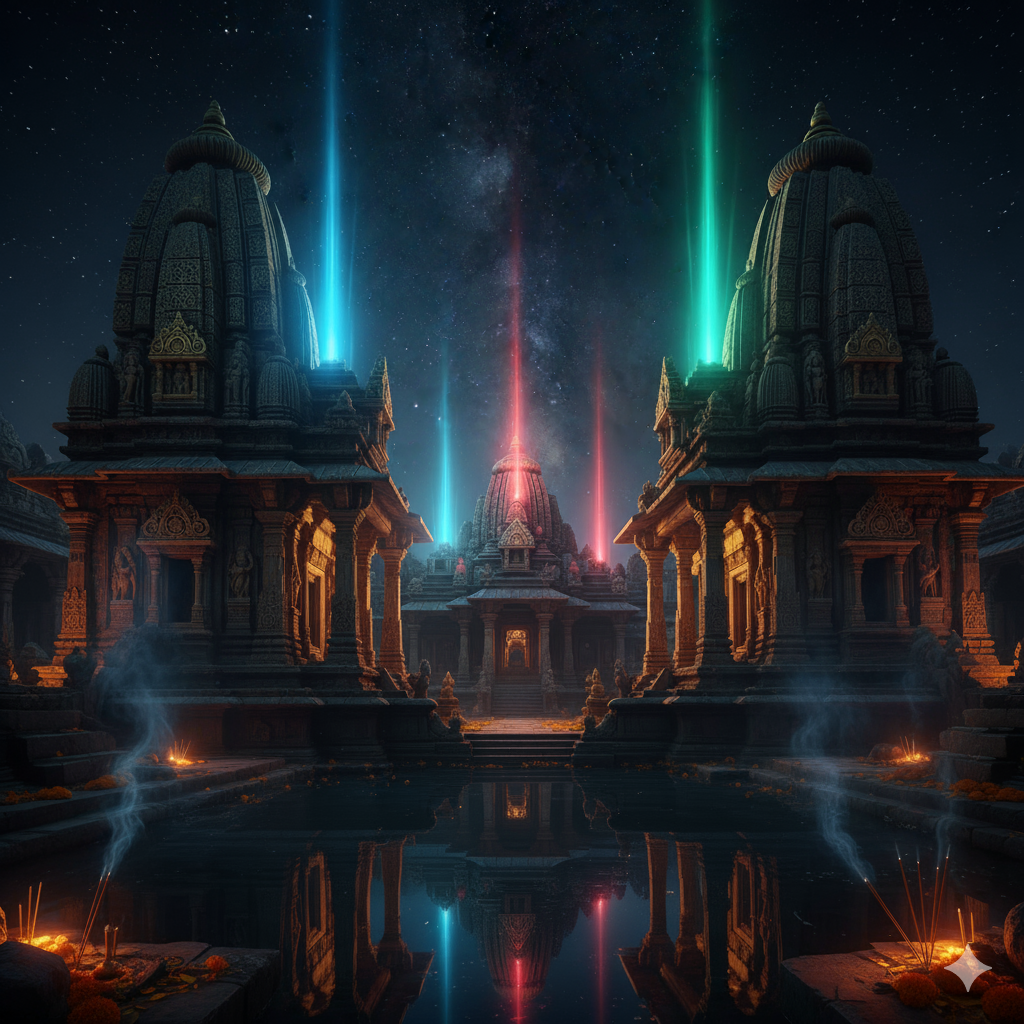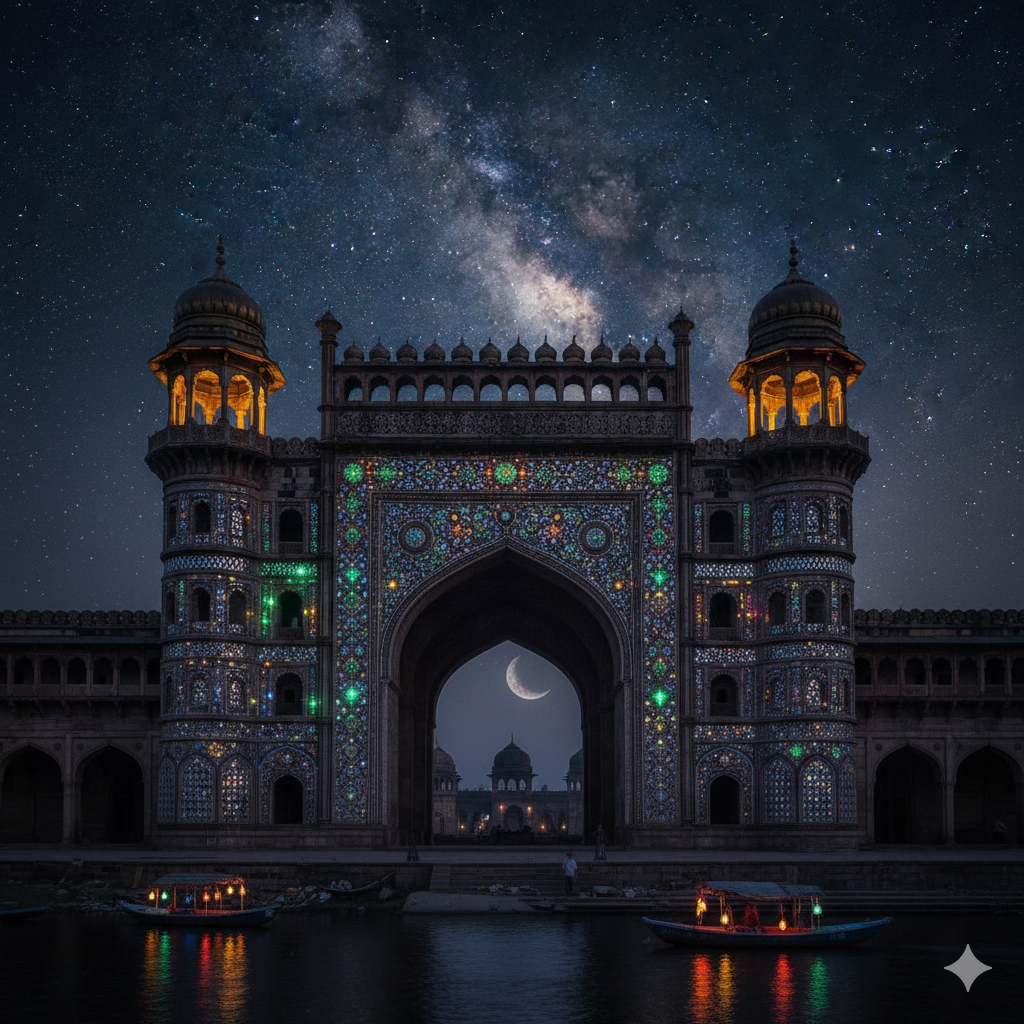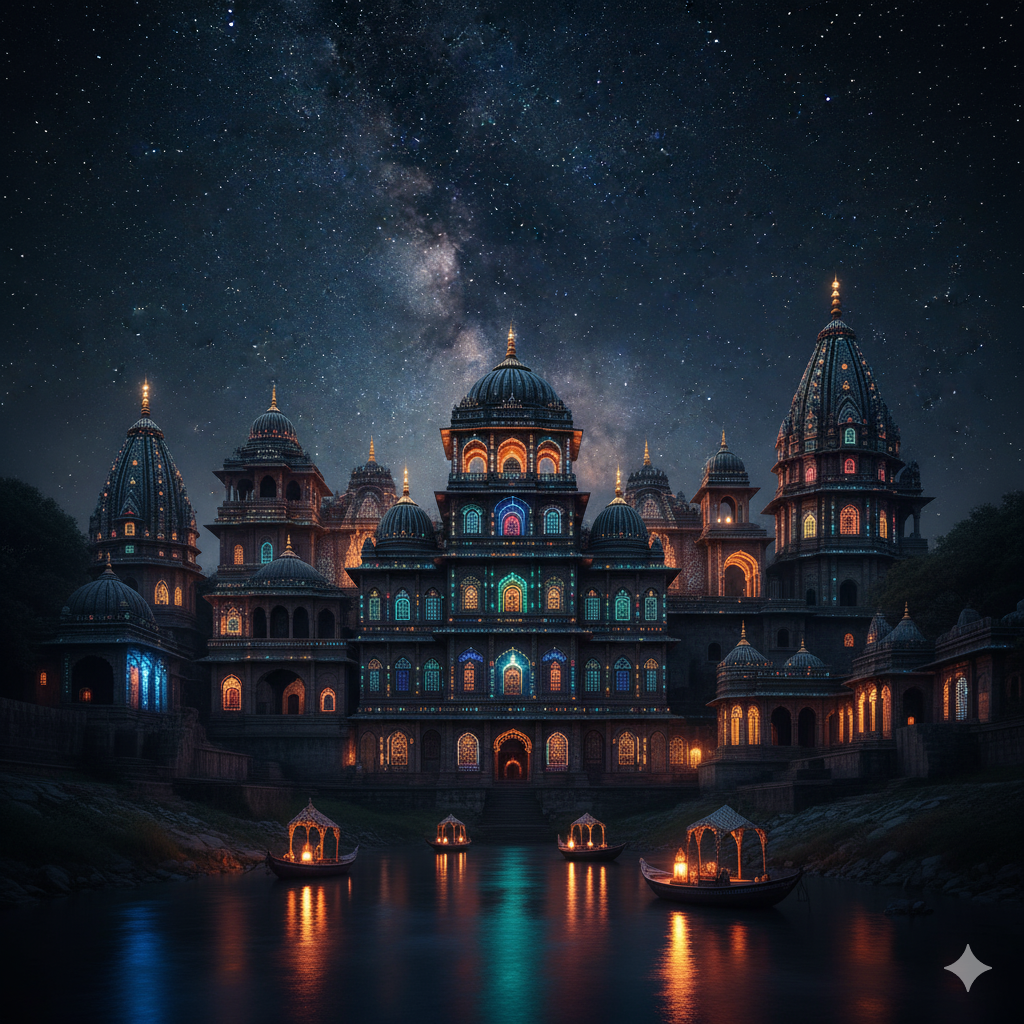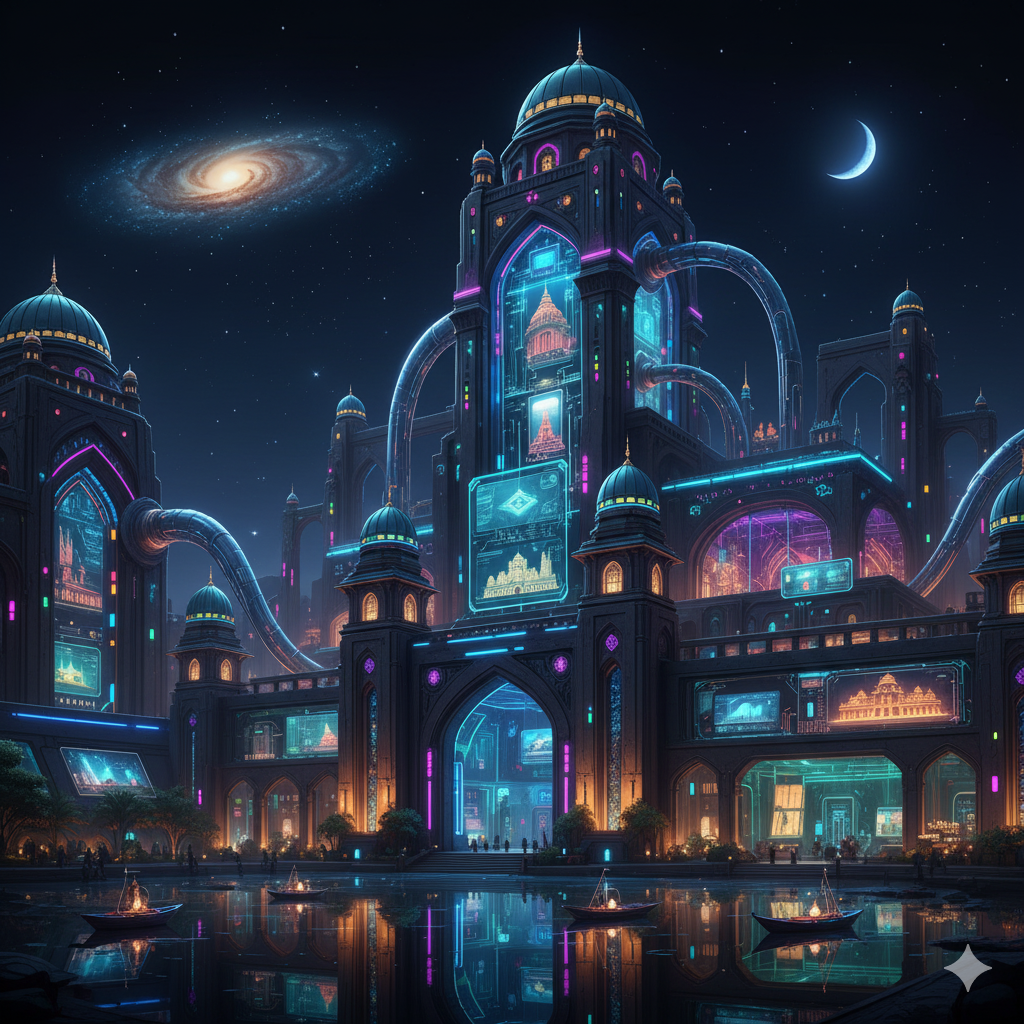Introduction
The region of Uttar Pradesh (UP), located in the heart of northern India, has been a cradle of Indian civilization and culture since ancient times. Throughout history, it has witnessed the rise and fall of several dynasties—such as the Mauryas, Guptas, Kushanas, and later the Mughals—each of which contributed immensely to the architectural evolution of the region. From Buddhist stupas and rock-cut caves to Hindu temples, forts, and palaces, the architectural heritage of Uttar Pradesh reflects not only the aesthetic brilliance of ancient Indian craftsmanship but also the social, religious, and political ideals of the time.
Architecture in ancient Uttar Pradesh was not merely a form of artistic expression; it was a manifestation of spirituality, devotion, power, and cultural identity. The evolution of architectural styles in this region represents a continuous dialogue between indigenous traditions and external influences, producing some of the most enduring masterpieces of Indian architecture.
1. Early Beginnings: The Mauryan and Pre-Mauryan Periods
The architectural history of Uttar Pradesh can be traced back to the pre-Mauryan era, when urban centers such as Kausambi, Varanasi (Kashi), and Ayodhya flourished. Archaeological excavations from these sites reveal evidence of early brick structures, fortifications, and urban planning.
1.1. The Mauryan Period (4th–2nd century BCE)
During the reign of Emperor Ashoka (273–232 BCE), architecture in Uttar Pradesh took a monumental leap. The Mauryan period is often regarded as the foundation of classical Indian architecture, known for its use of polished stone, symbolic pillars, and Buddhist monuments.
Major Architectural Features:
- Ashokan Pillars:
The famous Ashokan Pillar at Sarnath near Varanasi is one of the most remarkable specimens of Mauryan architecture. Made of polished sandstone, the pillar bears the Lion Capital, which later became India’s National Emblem. The pillar also carries edicts that reflect Ashoka’s policy of Dhamma (moral law).
The craftsmanship, precision, and polish of the stone represent the high technical skill achieved during this period. - Stupas:
Stupas were hemispherical mounds built to enshrine relics of the Buddha. The Dhamekh Stupa and Chaukhandi Stupa at Sarnath are significant examples. The Dhamekh Stupa, built originally by Ashoka, was later enlarged in subsequent centuries. It symbolizes the place where Buddha delivered his first sermon after enlightenment—“Dharmachakra Pravartana.”
Significance:
The Mauryan architecture of Uttar Pradesh marks the beginning of monumental stone construction in India. It reflects a blend of religious symbolism, imperial authority, and advanced engineering.
2. The Shunga, Kushana, and Gupta Periods: The Golden Age of Temple Architecture
2.1. The Shunga and Kushana Contributions
After the decline of the Mauryan Empire, the Shunga (2nd–1st century BCE) and Kushana (1st–3rd century CE) dynasties carried forward the architectural traditions of Buddhism and Hinduism. The region continued to flourish as a major center of art and religion.
- Bharhut and Sanchi influences extended into the Uttar Pradesh region, inspiring narrative reliefs and gateways.
- The Mathura region, under the Kushanas, became a thriving center of artistic and architectural development.
Mathura sculptures, carved out of the distinctive red sandstone, depict Buddhist, Jain, and Hindu deities with refined expressions and symbolic gestures.
The Kushana rulers patronized both stupas and monasteries, promoting religious pluralism and artistic innovation.
2.2. The Gupta Period (4th–6th century CE): The Classical Age
The Gupta Empire, with centers at Prayagraj (Allahabad), Kausambi, and Varanasi, ushered in what is often called the Golden Age of Indian Art and Architecture. The Guptas developed the Nagara style of temple architecture, which later became the hallmark of North Indian temples.
Key Architectural Features of Gupta Period:
- Introduction of shikhara (tower) over sanctum.
- Use of stone and brick temples with intricate carvings.
- Sculptural decoration depicting gods, goddesses, and mythological scenes.
- Emphasis on symmetry and proportion.
Important Examples:
- Dashavatara Temple, Deogarh (near Jhansi):
Although geographically near the UP border, it represents the finest example of early Nagara-style architecture. Built in the 5th century CE, it is dedicated to Lord Vishnu and features panels depicting scenes from the Ramayana and Mahabharata. - Bhitargaon Temple (Kanpur District):
Constructed entirely of brick and terracotta in the 5th century CE, it is one of the earliest surviving Hindu temples in North India. Its curvilinear shikhara and sculptural panels demonstrate the transition from wooden to stone architecture. - Sarnath Buddhist Complex:
During the Gupta period, Sarnath continued to be a vibrant Buddhist center. The Dhamekh Stupa was renovated and surrounded by monasteries and shrines built in stone and brick.
Significance:
Gupta architecture marks the synthesis of art and devotion, laying the foundation for the later medieval temple styles. It emphasized spirituality through symmetry, grace, and iconographic symbolism.
3. Post-Gupta and Early Medieval Period: Regional Expansion
Following the decline of the Guptas, various regional dynasties like the Pratiharas, Gahadavalas, and Kannauj rulers contributed to the architectural landscape of Uttar Pradesh.
3.1. The Pratihara Architecture (8th–10th century CE)
The Gurjara-Pratihara rulers, who controlled parts of western and central Uttar Pradesh, promoted the mature Nagara style. Their temples were characterized by ornate carvings, multiple shikharas, and elaborate doorways.
Features:
- Use of stone masonry and decorative motifs like lotus, kalasha, and celestial figures.
- Temples at Kannauj and Mathura reflected a synthesis of local and classical styles.
3.2. The Gahadavala Dynasty (11th–12th century CE)
The Gahadavalas of Kashi (Varanasi) and Kannauj were great patrons of Hinduism and temple construction.
Varanasi, under their rule, emerged as the spiritual capital of India, filled with shrines, ghats, and temples.
Significant Monuments:
- Kashi Vishwanath Temple (original structure):
Though the ancient form has been reconstructed multiple times, its origins trace back to the early medieval period. - Temples along the Ganga ghats—built with local sandstone—reflected the city’s religious and cultural prosperity.
Significance:
The post-Gupta era shows a regional diversification of architecture. While maintaining the Nagara tradition, architects adapted to local materials, climate, and devotional needs.
4. Buddhist and Jain Architecture in Ancient Uttar Pradesh
Uttar Pradesh, especially regions like Sarnath, Kushinagar, Kaushambi, and Shravasti, was central to Buddhist and Jain religious architecture.
4.1. Buddhist Monuments
- Sarnath:
The Dhamekh and Chaukhandi Stupas, along with monasteries like the Mulagandha Kuti Vihara, reflect continuous Buddhist architectural activity from Ashokan to medieval times. - Kushinagar:
Known as the place of the Buddha’s Mahaparinirvana, it houses stupas and monasteries built of brick and laterite. The reclining Buddha statue is a remarkable example of serenity in stone.
4.2. Jain Monuments
- The Mathura region was equally significant for Jainism. Early Jain temples and sculptures from the Kushana and Gupta periods depict Tirthankaras with distinct iconography and architectural frames.
- The Kankali Tila site in Mathura yielded numerous Jain shrines and sculptures, showing the religious diversity of the region.
Significance:
Both Buddhist and Jain architecture in Uttar Pradesh represent the spirit of non-violence, renunciation, and philosophical depth. They also highlight the region’s role as a crossroad of multiple faiths and cultural expressions.
5. Architectural Centers of Ancient Uttar Pradesh
5.1. Varanasi (Kashi)
One of the oldest continuously inhabited cities in the world, Varanasi’s architectural history spans millennia. From ancient shrines to ghats and temples, it symbolizes India’s spiritual continuum.
Architectural Features:
- Terraced ghats along the Ganga river.
- Temple spires rising over narrow lanes.
- Integration of religion, urban life, and art.
5.2. Ayodhya
Associated with the epic Ramayana, Ayodhya was an early center of temple architecture and urban planning. Excavations have revealed ancient brick structures, stupas, and artifacts dating back to the 6th century BCE.
5.3. Mathura
A center of Hindu, Buddhist, and Jain architecture, Mathura’s red sandstone structures represent some of the earliest sculptural and architectural innovations in North India.
5.4. Sarnath and Kushinagar
Both towns are Buddhist pilgrimage centers with stupas, monasteries, and relic mounds that display a timeline of architectural evolution from Ashoka to the medieval period.
6. Architectural Materials and Techniques
Ancient architects in Uttar Pradesh used locally available materials and developed sophisticated techniques:
- Materials:
Sandstone (especially from Chunar), brick, and terracotta. - Techniques:
- Polishing and carving stone surfaces (Mauryan).
- Structural use of bricks (Gupta and later).
- Corbelling and trabeated (beam-based) construction.
- Decorative terracotta panels and sculptural reliefs.
The technical perfection of Mauryan pillars and Gupta temples demonstrates the high level of engineering and artistic knowledge.
7. Symbolism and Cultural Significance
Architecture in ancient Uttar Pradesh was not limited to aesthetic appeal—it was deeply symbolic and functional.
7.1. Religious and Philosophical Meaning
- Temples symbolized the cosmic order and were designed according to Vastu Shastra principles.
- Stupas represented Buddha’s enlightenment and nirvana.
- Jain shrines embodied ideals of detachment and purity.
7.2. Socio-Political Importance
- Pillars and inscriptions served as instruments of royal propaganda (e.g., Ashokan Edicts).
- Temples were not only places of worship but also centers of education, economy, and art.
7.3. Cultural Continuity
The architectural legacy of ancient Uttar Pradesh created a foundation for medieval Indo-Islamic architecture, influencing later developments in Delhi, Agra, and Lucknow.
8. Decline and Transformation
With the advent of Turkish and Afghan invasions in the 12th century, many ancient monuments were destroyed or repurposed. However, the architectural ethos of the region persisted, blending into Indo-Islamic and later Mughal architecture. The continuity of design, spatial planning, and symbolism from ancient to medieval times is a testimony to Uttar Pradesh’s enduring cultural vitality.
Conclusion
The development of architecture in ancient Uttar Pradesh represents a magnificent saga of human creativity, devotion, and intellectual pursuit. From the Ashokan pillars of Sarnath to the Gupta temples of Bhitargaon, and from the Buddhist monasteries of Kushinagar to the Hindu shrines of Varanasi, the region’s architectural evolution encapsulates the essence of India’s civilizational journey.
Significance in Broader Context:
- It established north India’s architectural identity.
- It reflected a harmonious synthesis of art, religion, and politics.
- It provided the foundation for medieval and modern architectural traditions in the Indo-Gangetic plains.
In essence, the architectural heritage of ancient Uttar Pradesh is not merely a collection of monuments; it is a living testimony to India’s spiritual and cultural grandeur—a bridge connecting the past with the present.
Summary Points
- Mauryan Period: Ashokan pillars and stupas at Sarnath marked the dawn of monumental architecture.
- Kushana and Gupta Periods: Development of temple architecture and the Nagara style; flourishing of Mathura art.
- Post-Gupta Era: Expansion under Pratiharas and Gahadavalas; temple towns like Varanasi and Kannauj.
- Buddhist and Jain Influence: Sarnath, Kushinagar, and Mathura became religious centers with stupas and monasteries.
- Cultural Legacy: Set the stage for later medieval architecture, blending continuity and innovation.




